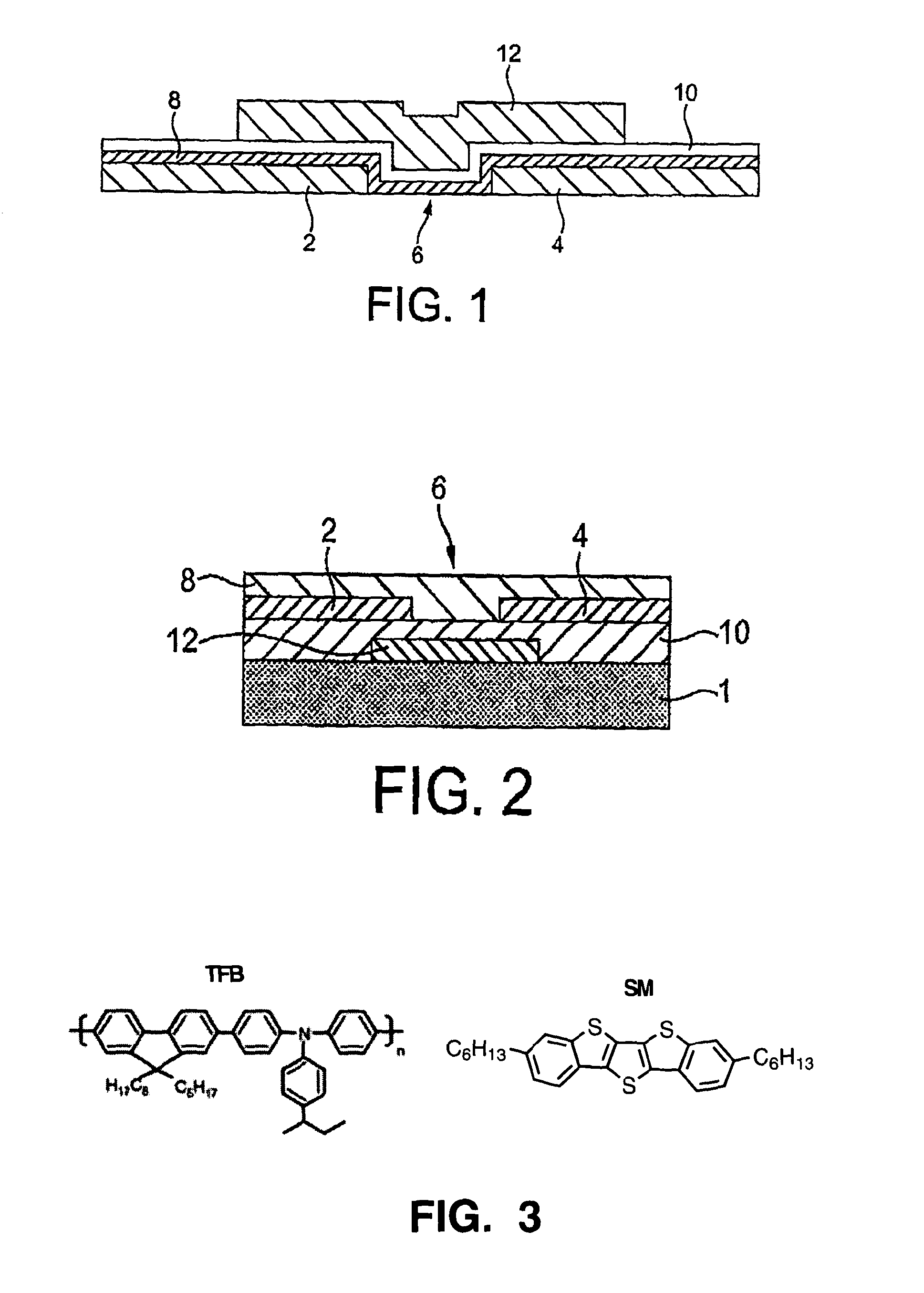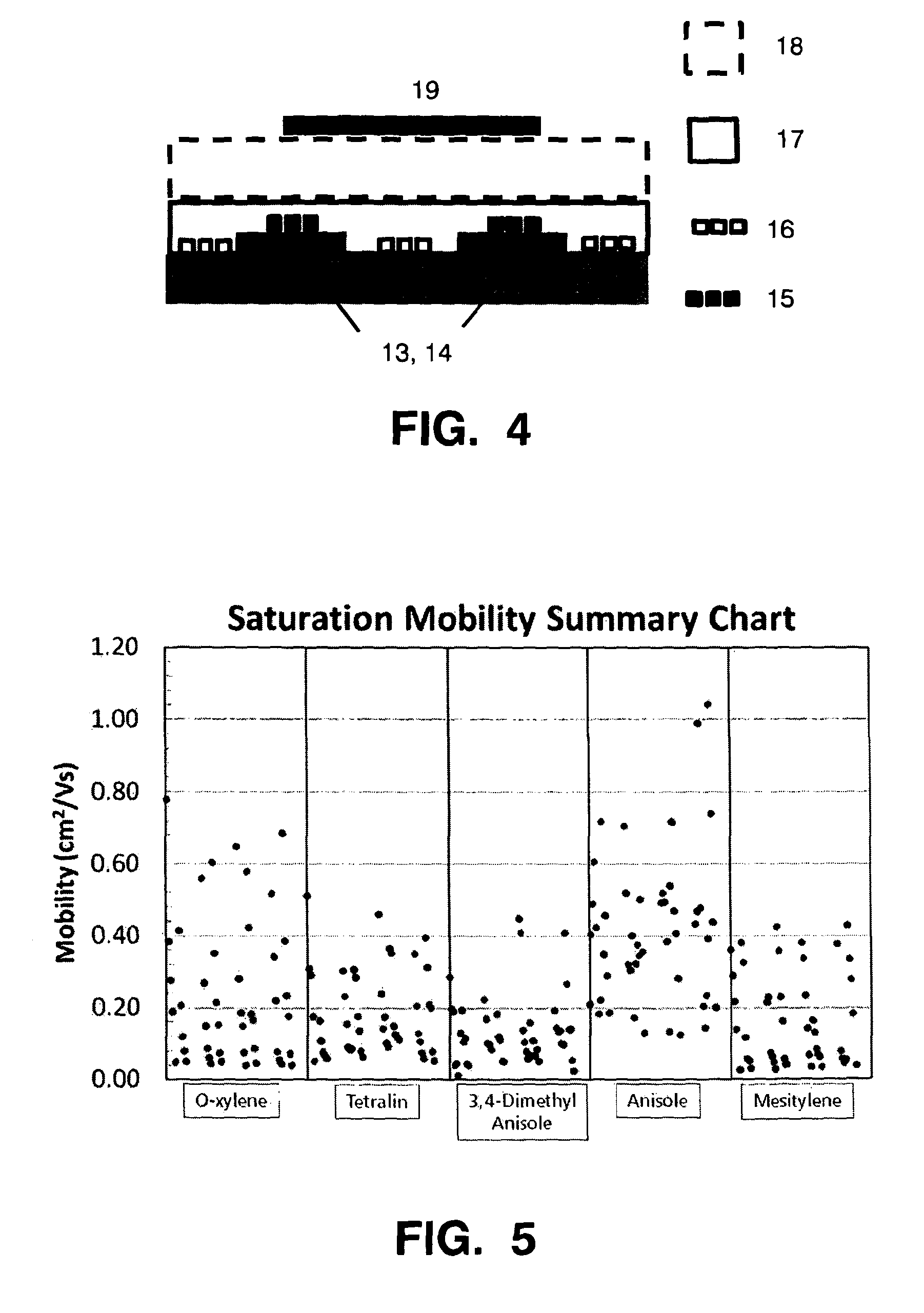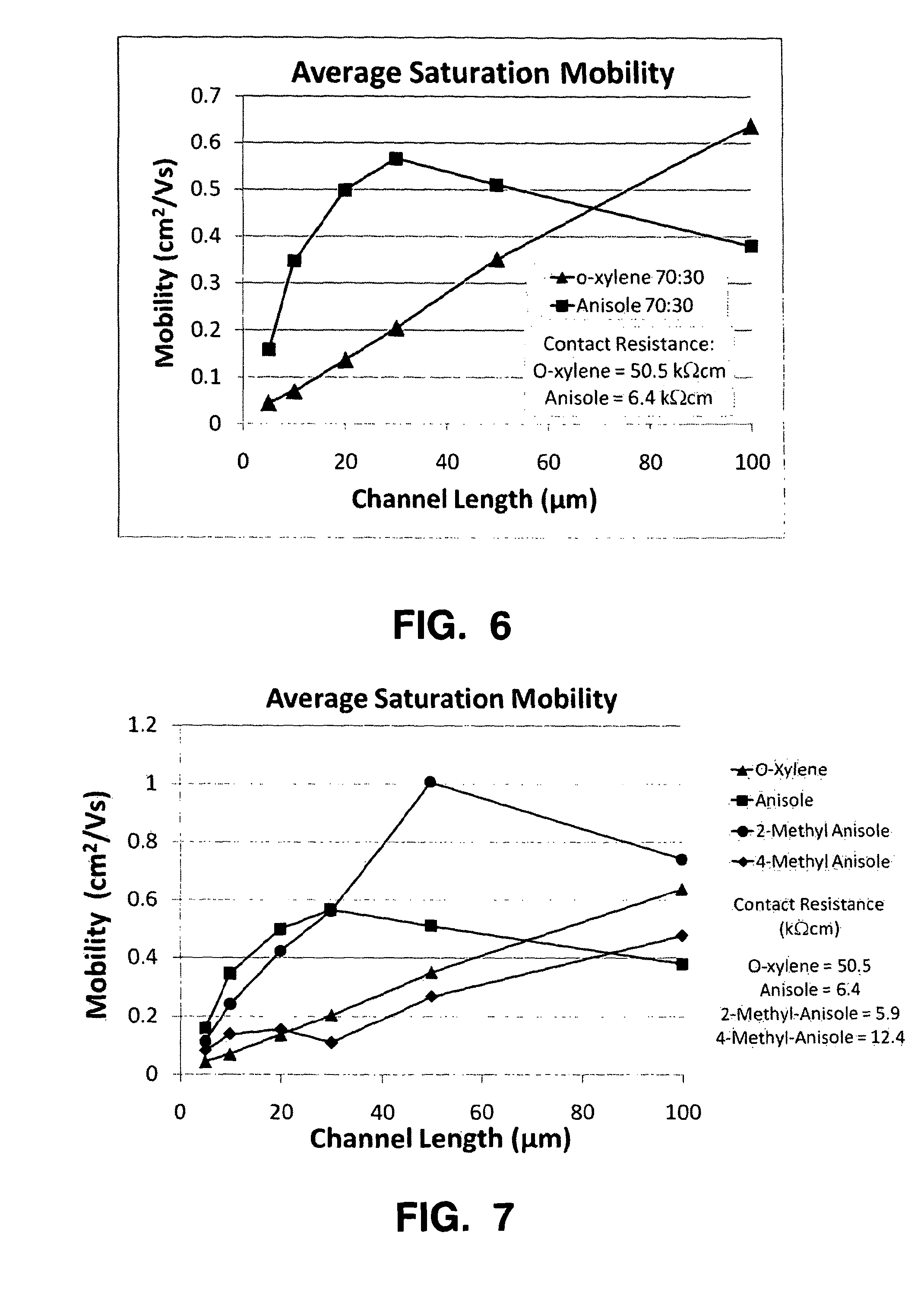Low contact resistance organic thin film transistors
a thin film transistor, low contact resistance technology, applied in semiconductor devices, solid-state devices, electrical devices, etc., can solve the problems of difficult to obtain repeatable results from solution processed films, film roughness, and limit the performance of these materials in devices, so as to achieve the effect of reducing contact resistan
- Summary
- Abstract
- Description
- Claims
- Application Information
AI Technical Summary
Benefits of technology
Problems solved by technology
Method used
Image
Examples
example 1
[0231]In this first example, data were obtained from devices prepared as described in the above preparative example with semiconductor layers deposited from anisole, and these were compared with data obtained from reference examples of devices with films cast from other solvents, namely o-xylene, tetralin, dimethylanisole and mesitylene. The saturation mobility of the resulting devices was measured and is shown in FIG. 5.
[0232]From FIG. 5, the mobility ranges were measured for 5 to 100 μm devices, and these are set out in Table 1 below.
[0233]
TABLE 1DimethylO-xyleneTetralinanisoleAnisoleMesityleneMobility range0.0390.0519.4 × 1030.1240.025(cm2 / Vs)to 0.778to 0.510to 0.448to 1.040to 0.428For 5 to 100μm devices
[0234]The range in mobilities arises from the range of channel lengths used in the test cells (5 to 100 μm). Devices with the shortest channel lengths were found to exhibit lower mobilities (contact resistance is the more dominant component compared to the total channel resistance...
example 2
[0236]A reduced contact resistance is only part of the reason for realising an improved device performance when using the solvents of the invention such as anisole as the organic semiconductor solvent in place of xylene or another conventional solvent. In addition to a lower absolute contact resistance, the proportion of contact resistance to the total channel resistance was also found to be lower for devices using the solvents of the invention such as anisole. Table 2 below highlights the average values of contact and channel resistances for a series of devices with organic semiconductor layers deposited from xylene or anisole. The devices were produced by depositing an SM:TFB organic blend with a mass ratio of 70:30 respectively from a solution thereof in the tested solvents. Values were calculated for a gate bias of −40 V, and normalised to the channel width (all devices have a channel width of 2 mm).
[0237]The total channel resistance shown in Table 2 below is defined as the sum ...
example 3
[0241]In this example, further solvents were tested and also found to have superior properties in reducing contact resistance. Devices were prepared as in the preparative example using a solution of a 30:70 mix of polymer component TFB and small molecule component SM in the solvents 2-methylanisole and 4-methylanisole as the organic semiconducting layer. Comparative devices were also prepared using anisole (another according to the invention) and o-xylene as solvents, as in Example 1. The average saturation mobility of the devices was measured and is shown in FIG. 7 together with the average contact resistance for each of the devices.
[0242]The results clearly show that the devices prepared using 2-methylanisole and 4-methylanisole as the solvent in depositing the organic semiconductor blend have significantly lower contact resistance values and higher average saturation regime mobilities than that obtained from inks produced in o-xylene. Due to the lower contact resistance for these...
PUM
| Property | Measurement | Unit |
|---|---|---|
| channel length | aaaaa | aaaaa |
| length | aaaaa | aaaaa |
| length | aaaaa | aaaaa |
Abstract
Description
Claims
Application Information
 Login to View More
Login to View More - R&D
- Intellectual Property
- Life Sciences
- Materials
- Tech Scout
- Unparalleled Data Quality
- Higher Quality Content
- 60% Fewer Hallucinations
Browse by: Latest US Patents, China's latest patents, Technical Efficacy Thesaurus, Application Domain, Technology Topic, Popular Technical Reports.
© 2025 PatSnap. All rights reserved.Legal|Privacy policy|Modern Slavery Act Transparency Statement|Sitemap|About US| Contact US: help@patsnap.com



